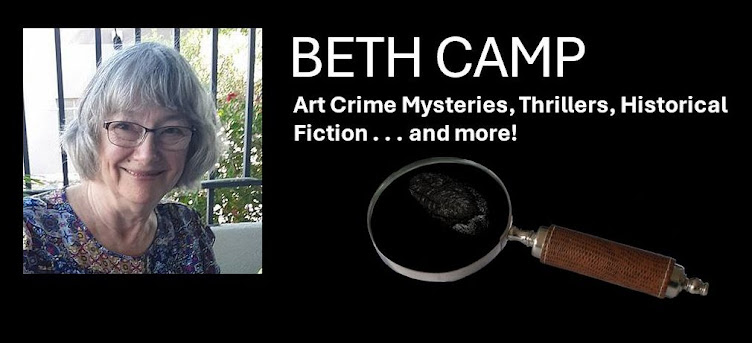 I remember hunting with my grandfather for deer, just the two of us trekking through the forest. His quiet voice pointed out places deer might bed down for the night or a broken bit of brush that said a deer passed this way. We settled down amidst clouds of mosquitoes to wait.
I remember hunting with my grandfather for deer, just the two of us trekking through the forest. His quiet voice pointed out places deer might bed down for the night or a broken bit of brush that said a deer passed this way. We settled down amidst clouds of mosquitoes to wait. When two deer made their way down the hill, chomping on berries and grasses all the way, I was surprised by how big they were and how much noise they made as the crashed through the bushes. Some of those experiences, which include helping to skin out a deer on my grandfather's back porch, help me to understand the thrill of the buffalo hunt and the gritty reality of making pemmican.
 |
| Paul Kane: Assiniboine Hunting Buffalo (1851-1856) Source: Wikipedia |
My heroine of Rivers of Stone, Cat McDonnell, meets up with Paul Kane at Norway House -- and travels west with him, a few months after Kane participated in a buffalo hunt led by Red River Métis.
All the Red River families -- men, women, children, and dogs -- participated in the annual buffalo hunt, once in the spring and again in the fall. In Kane's time, about 500 of the famous Red River carts, well-loaded with wood, followed the hunters on horseback to the hunt site on the Prairies. The carts were needed to carry tons of buffalo meat home, and the women (and children) dried the meat and made pemmican. The dogs ate the leftovers.
 |
| Buffalo Skulls, 1870 Wikipedia |
Once a major herd was discovered, those on horseback (Kane among them), loaded their guns, put extra ammunition in their mouths, and galloped into the midst of the herd of some 4,000. These great beasts, confused and alarmed, ran in every direction. The shooting started, with the hunters reloading their guns while at a gallop. For the next hour, the hunters continue firing, hoping not to hit each other. Kane reports that about 500 buffalo were killed. He was in the midst of the hunt -- actually dismounting to make a sketch! When the hunt was over, Kane returned to camp with the others, carrying with him the tongues of those buffalo he had killed to show his prowess as a hunter. Immediately, fires were built, the buffalo roasted, and the feast began.
Kane also describes how pemmican is made: First the buffalo meat is dried and then pounded between two rocks "until the fibres separate". Then, about 50 pounds of this buffalo meat is mixed while hot with a nearly like amount of fat, and sewn in a buffalo bag. I can't imagine the messy process of making pemmican, but I do know its importance to the fur brigade travelers who faced starvation on the long trail from York Factory to Fort Vancouver.
More about the buffalo hunt can be found at the Louis Riel Institute and in Chapter 6 of Kane's Wanderings of an Artist Among the Indians of North America.
Check out what others have written for the A to Z Blogging Challenge HERE. We've just gotten started. It's not too late if you want to jump right in.

No comments:
Post a Comment